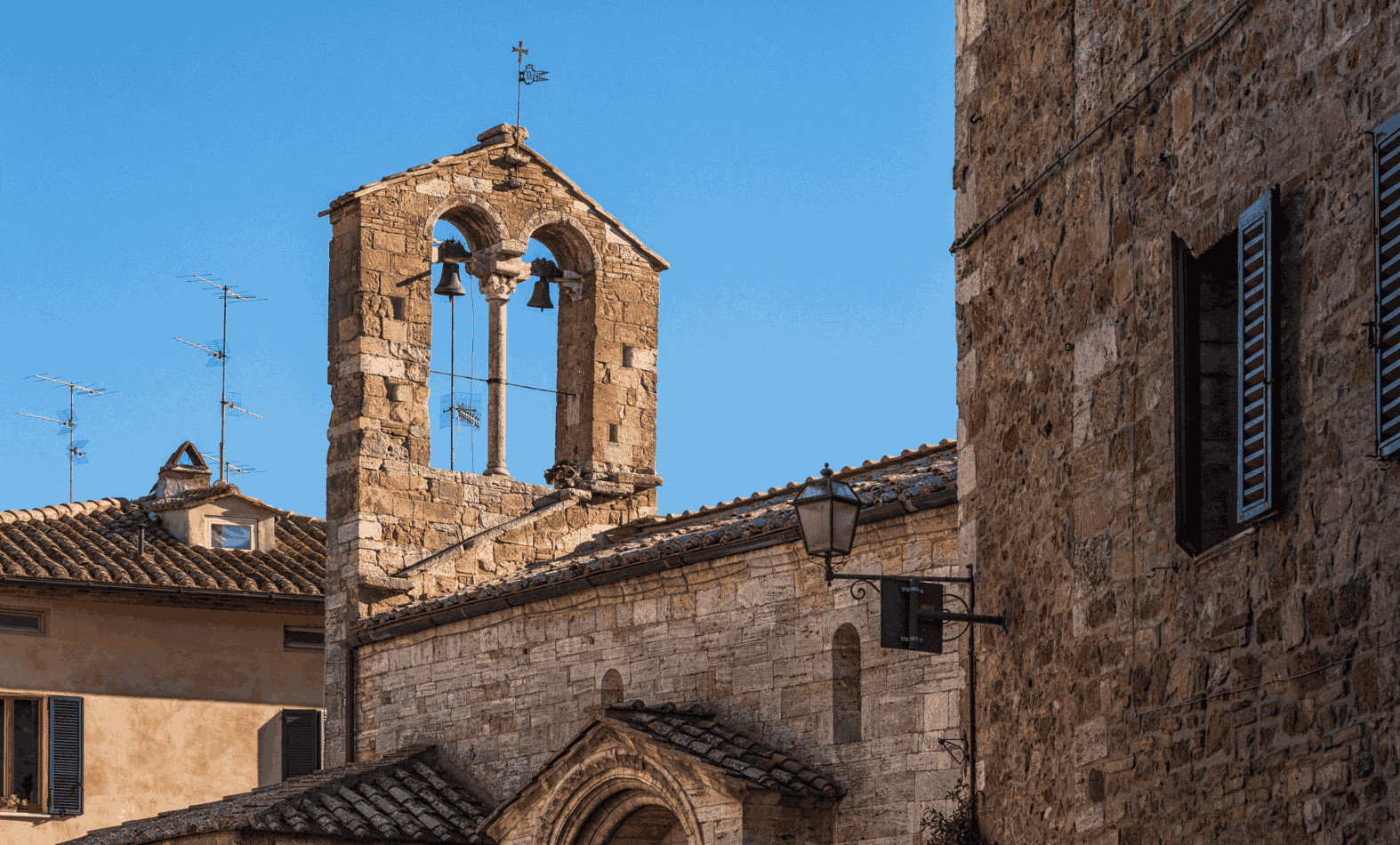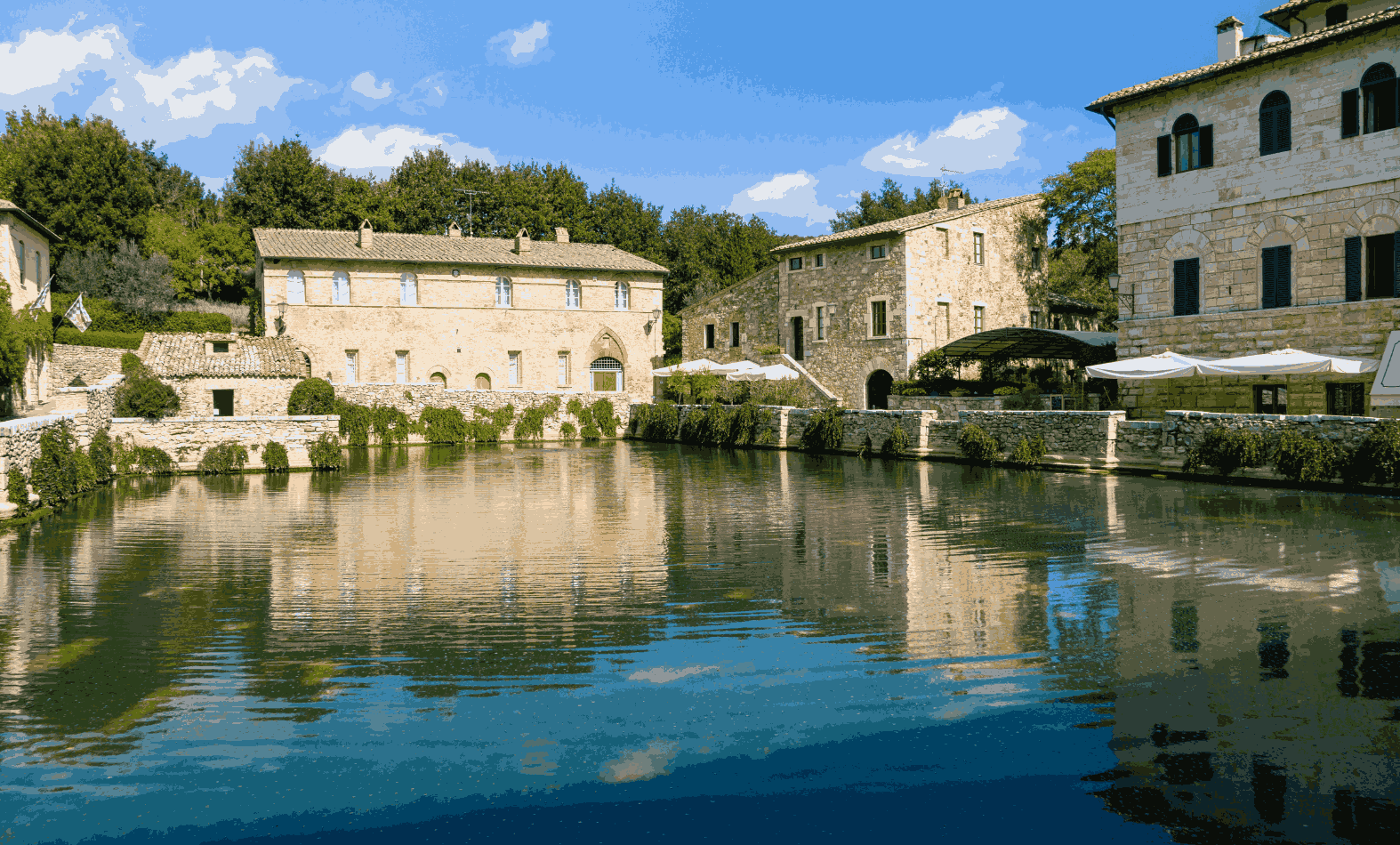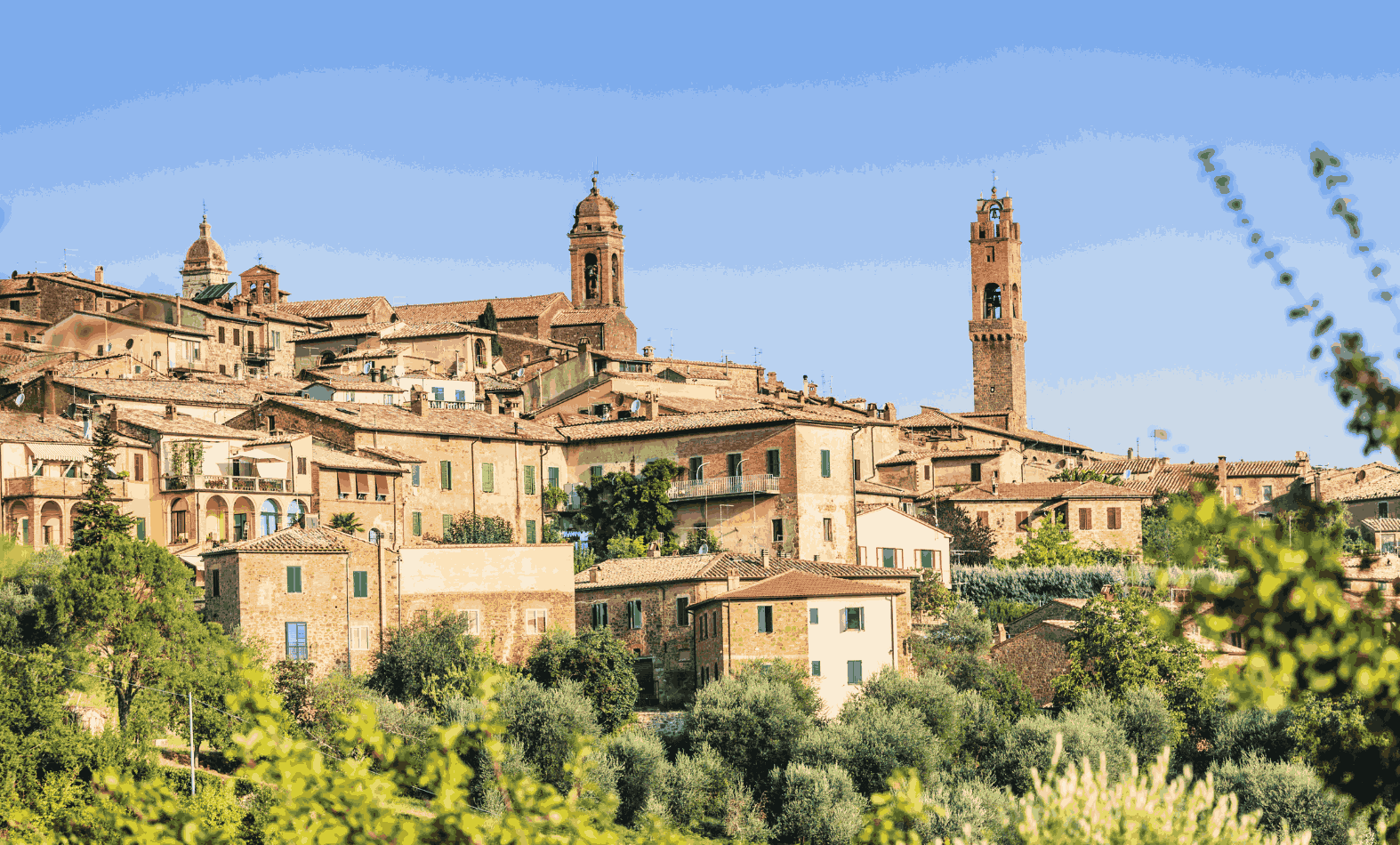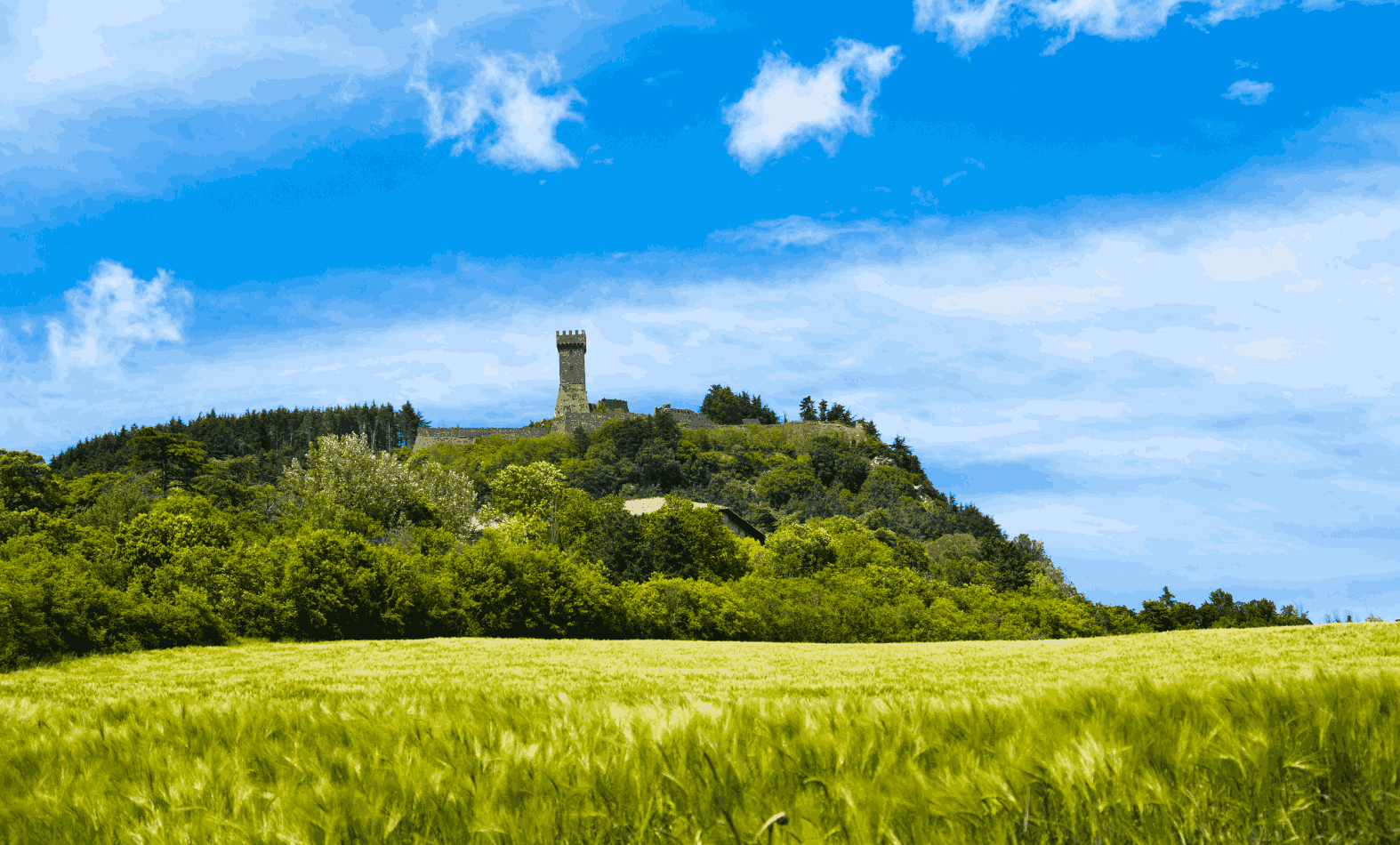Montepulciano
Located 24 km from San Quirico d'Orcia. Home of Wine Nobile, in July the town is the scene of an important, mainly musical event.
In the municipalities of San Quirico d'Orcia, Pienza, Montalcino, Castiglione d'Orcia and Radicofani, the Val d'Orcia Natural Artistic and Cultural Park was established, which on 2 July 2004 obtained recognition as a 'UNESCO World Heritage Cultural Landscape'.
San Quirico d'Orcia is one of the best-preserved medieval villages in the Siena area, linking its history to the passage of important historical figures such as the Archbishop of Canterbury in 990 and Frederick I of Swabia (known as Barbarossa), who encamped there in 1155 to negotiate with the ambassadors of Pope Adrian IV for his coronation as Emperor.
Useful contacts: San Quirico d'Orcia Tourist Office 0577 899728

A hamlet of San Quirico d'Orcia, Bagno Vignoni is located 5 km along the Cassia road. A spa centre of Roman origin, in the Middle Ages it enjoyed great fame and illustrious personages came to be cured by its waters, such as Pope Pius II Piccolomini and Lorenzo the Magnificent. St Catherine of Siena stayed here between 1362 and 1367. The Roman baths and the Parco dei Mulini dominate the panorama of the Val d'Orcia. The water gushes out from a depth of 1000 metres at a temperature of 52°, gathering in a large pool.
Useful contacts:agno Vignoni Tourist Office 0577 888975

Castiglione d'Orcia is located 8 km from San Quirico d'Orcia and has been mentioned since 714. Visit the Sorgente dello Scodellino and the Parco dell'Ermicciolo, ideal places for walks and picnics, as well as the 17th-century Piazza il Vecchietta and the ruins of the Rocca Aldobrandesca. The Rocca d'Orcia (Frazione di Castiglione d'Orcia) is a small medieval village at the foot of the ancient medieval tower in a small museum of rural culture. Don't miss the Bagni di San Filippo, where the thermal waters gush out at a temperature of 48°. The most spectacular destination is the large limestone incrustations of Fosso Bianco, where you can bathe under the waterfall or in two natural pools. Vivo d'Orcia with its late Renaissance hermitage built by the Camaldolese around the year 1000 is worth a visit.
Useful contacts: Pro Loco di Castiglione d'Orcia 0577 887363

Montalcino is located 15 km from San Quirico d'Orcia and is famous for its high quality Brunello docg wine and honey production. In the surroundings there are numerous archaeological finds from Etruscan and Roman times as well as the Abbey of Sant'Antimo dating back to 814. The Palazzo Vescovile houses the civic, diocesan and archaeological museums, with works by important Sienese authors and the ancient Sant'Antimo Crucifix. Also worth visiting are the Churches of Sant'Agostino, Sant'Egidio and San Francesco, as well as the Sanctuary of the Madonna del Soccorso.
Useful contacts: Montalcino Tourist Office 0577 849331

10 km from San Quirico d'Orcia, it takes its name from Enea Silvio Piccolomini, who was born there in 1405 and became pope with the name Pius II in 1458. Pienza became a papal seat and then a bishopric. Still today, the village of Pienza is a small architectural jewel in which we can observe many works that make it one of the most important cities of art in the province of Siena. Pius II began its renovation by entrusting the work to Bernardo Rossellino, who built the Palazzo Piccolomini and the Duomo. Next to it is the Casa dei Canonici, home to the Diocesan Museum. Equally important are the Palazzo Comunale and the Palazzo Vescovile. Also worth visiting are the Pieve di Corsignano and the castle of Spedaletto and the Olivetan monastery of S. Anna in Camprena.
Pienza is famous for making cheese, the renowned 'cacio di Pienza'.
Useful contacts: Pienza Tourist Office 0578 749905

It is 28 km from San Quirico d'Orcia and rises at the foot of a high volcanic cliff of basaltic rock and is of Etruscan origin. Situated in the heart of the medieval Via Francigena, it offers views of panoramas ranging from the Amiata to the Apennine chain, from the lakes of Bolsena and Trasimeno to the Tyrrhenian Sea. The feudal castle built in Carolingian times imposes itself on the view in its mighty bulk. The Rocca is linked to the legend of Ghino di Tacco, a Sienese outcast who took possession of the castle at the end of the 12th century. Dante even mentions him in a canto of Purgatory. Boccaccio dedicated the second novella of the tenth day of the Decameron to him, recounting the episode of the Abbot of Cluny.
Useful contacts: Pro Loco di Radicofani 331 494 9157
